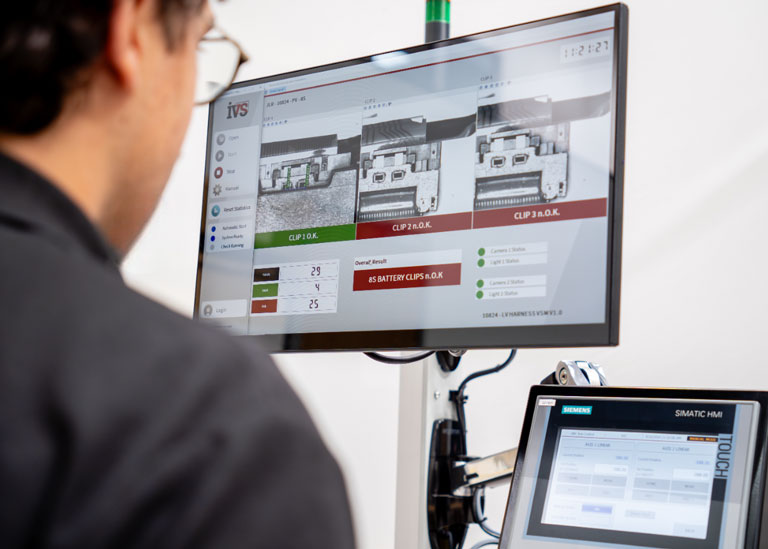Quality control comes first in the highly regulated fields of medical device and pharmaceutical manufacture. Not only is it a question of efficiency; patient safety depends on every product meeting strict industry requirements. Long the backbone of quality control in this industry, traditional inspection techniques depend on human monitoring and standard rule-based vision systems. But the limits of traditional methods are clear as production sizes rise and manufacturing techniques get more complicated. Artificial intelligence’s inclusion into machine vision systems is changing the inspection scene and allowing more precise, flexible, effective quality control.
Vision systems driven by artificial intelligence are significantly altering how producers handle production efficiency, compliance verification, and defect discovery. Unlike rule-based systems, which run on pre-programmed criteria to find flaws, artificial intelligence models—especially those using deep learning—can spot minute, hitherto undetectable variations in items. In the medical and pharmaceutical sectors, where variances can be minute but nevertheless noteworthy enough to affect product integrity, this is extremely helpful.
Detecting discrepancies in high-volume manufacturing lines is one of the important domains where artificial intelligence-powered visual systems shine. Medical equipment including syringes, catheters, and surgical tools must to be exactly perfect; even small flaws can affect their efficacy. Conventional machine vision systems must be extensively manually programmed to distinguish between good and bad products. By means of large datasets of images, artificial intelligence models can be trained to identify acceptable deviations while indicating abnormalities that might have escaped attention under a rule-based approach. This guarantees that only really faulty goods are taken off the supply chain by greatly lowering false positives and negatives.
AI-enhanced vision technologies are proving absolutely essential is pharmaceutical packaging and labelling. Regulatory compliance depends critically on batch code verification, expiration date printing, and label placement precision. Although efficient, standard OCR (optical character recognition) techniques can have difficulty with variances in font clarity, small distortions, or package material. Even in demanding environments like curved surfaces or low-contrast printing, AI models educated on thousands of packaging samples may learn to spot mistakes with significantly more dependability. These systems’ self-learning character also helps them to adjust to new materials and packaging designs without calling for significant reprogramming.
Another area where visual inspection driven by artificial intelligence is making great progress is the sterility and integrity of medical packaging. Combining human inspectors with static rule-based visual checks has long been the basis for seal validation in blister packs, vials, and ampoules. These techniques can, however, have trouble with borderline situations such minor punctures compromising sterility or somewhat uneven heat sealing. Combining artificial intelligence-based vision inspection with hyperspectral imaging or X-ray analysis will help to identify hidden flaws missed by conventional techniques, therefore preventing the release of contaminated goods into use. In the pharmaceutical industry especially, where even little packaging flaws could cause contamination hazards, this is especially important.
The capacity of AI-powered vision systems to improve traceability and compliance with strict legal criteria adds still another benefit. Manufacturers of medical devices have to follow EU MDR, ISO 13485, and FDA 21 CFR Part 820 among other international guidelines. By means of factory execution systems (MES) and enterprise resource planning (ERP), AI vision systems can interact to generate real-time inspection data, therefore guaranteeing thorough documentation of quality control methods. For recalls and regulatory checks, this degree of traceability is absolutely helpful since it lets producers monitor and separate faulty batches with until unheard-of speed and accuracy.
Visual inspection is being used to lower industrial waste and increase productivity. Conservative flaw detection thresholds of traditional inspection techniques might cause too high rejection rates. With their capacity to recognise subtle differences in product quality, artificial intelligence models can separate between actual flaws and benign deviations. Over time, this lowers needless waste without sacrificing safety criteria, therefore saving significant costs. Moreover, vision systems driven by artificial intelligence function nonstop without tiredness, enabling constant inspection quality across protracted manufacturing cycles.
Extensive data training is one of the difficulties that artificial intelligence-based visual systems in pharmaceutical and medical production presents. Unlike rule-based systems, which may be used with specified criteria, artificial intelligence models need vast amounts of high-quality photos for training. To guarantee strong model performance, this entails selecting varied datasets considering changes in illumination, angles, and material qualities. Synthetic data creation and transfer learning, however, are solving these issues and increasing the viability of artificial intelligence implementation—even for companies with limited access to big datasets.
Another factor is how well current manufacturing infrastructure integrates. Many manufacturing plants run antiquated machinery not meant to fit vision systems driven by artificial intelligence. Modern artificial intelligence solutions, on the other hand, can be used as modular updates that complement current technology to improve its capacity instead of totally replacement. Emerging as a good alternative are cloud-based artificial intelligence vision systems, which let companies use strong computer capacity without making large on-site hardware purchases.
As artificial intelligence-powered vision systems develop, their possible uses in pharmaceutical and medical production will only grow. Real-time adaptive learning will probably be included into the future generation of vision technology so that systems may dynamically change their flaw detection models as they handle fresh input. Furthermore, predictive analytics driven by artificial intelligence can help companies foresee possible quality problems before they materialise, therefore transforming quality management from a reactive to a proactive activity.
Adoption of artificial intelligence-driven visual inspection in pharmaceutical and medical industry marks a basic change in quality control strategy. AI vision systems are redefining the sector by raising accuracy, cutting waste, boosting compliance, and raising efficiency. Although data needs and execution still present difficulties, the long-term advantages much exceed the initial outlay. Manufacturers trying to satisfy the highest standards of quality and safety in an increasingly complicated regulatory environment will find that as the technology develops an invaluable tool.
